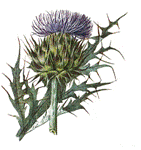Papers in the Biological Sciences
Document Type
Article
Date of this Version
8-1999
Abstract
Research questions about introductions
Several research questions need to be answered to help ensure that proposed introductions are done wisely and safely.
Guarding against risks without sacrificing benefits:
How can the potential benefits and costs of introductions best be evaluated in economic, environmental, and social terms?
Should all introductions be regulated?
How different must organisms or recipient ecosystems be from those assessed previously to warrant independent assessment?
When is it appropriate to assess and regulate taxa other than species?
What are appropriate ecological and political boundaries for regulation?
Alternatives to introductions:
How and when can indigenous organisms be domesticated so that they can substitute for proposed uses of nonindigenous organisms?
How can the retention of indigenous species and natural food webs be integrated into agroecosystems so that the risk of pest problems is minimized?
Purposeful introductions:
What common guidelines can be developed for deliberate introductions of all kinds of organisms?
Have screening procedures differed for introductions that proved successful or harmful?
How can the potential for nonindigenous organisms to disrupt ecosystem processes be assessed and reduced?
Can the demand for introductions be reduced by improving the effectiveness of introductions that are attempted?
Reducing negative impacts:
When can reduction of human-caused disturbance within natural areas be used to control nonindigenous species impacts?
Can subtle, indirect effects of potential introductions be predicted?
Can enough be learned from the population growth lags, booms, and crashes of previously introduced organisms to make useful generalizations?
Should special guidelines accompany release of sterile forms, which may pose less risk than fertile organisms?
Can protocols be developed to predict when an introduced species will hybridize with natives and what the ecological and economic consequences of such hybridization might be?
Should special guidelines related to invasion and hybridization potential be added to those that already regulate release of genetically engineered organisms?



Comments
Published in BioScience, Vol. 49, No. 8 (August, 1999), pp. 619-630. Published by American Institute of Biological Sciences.